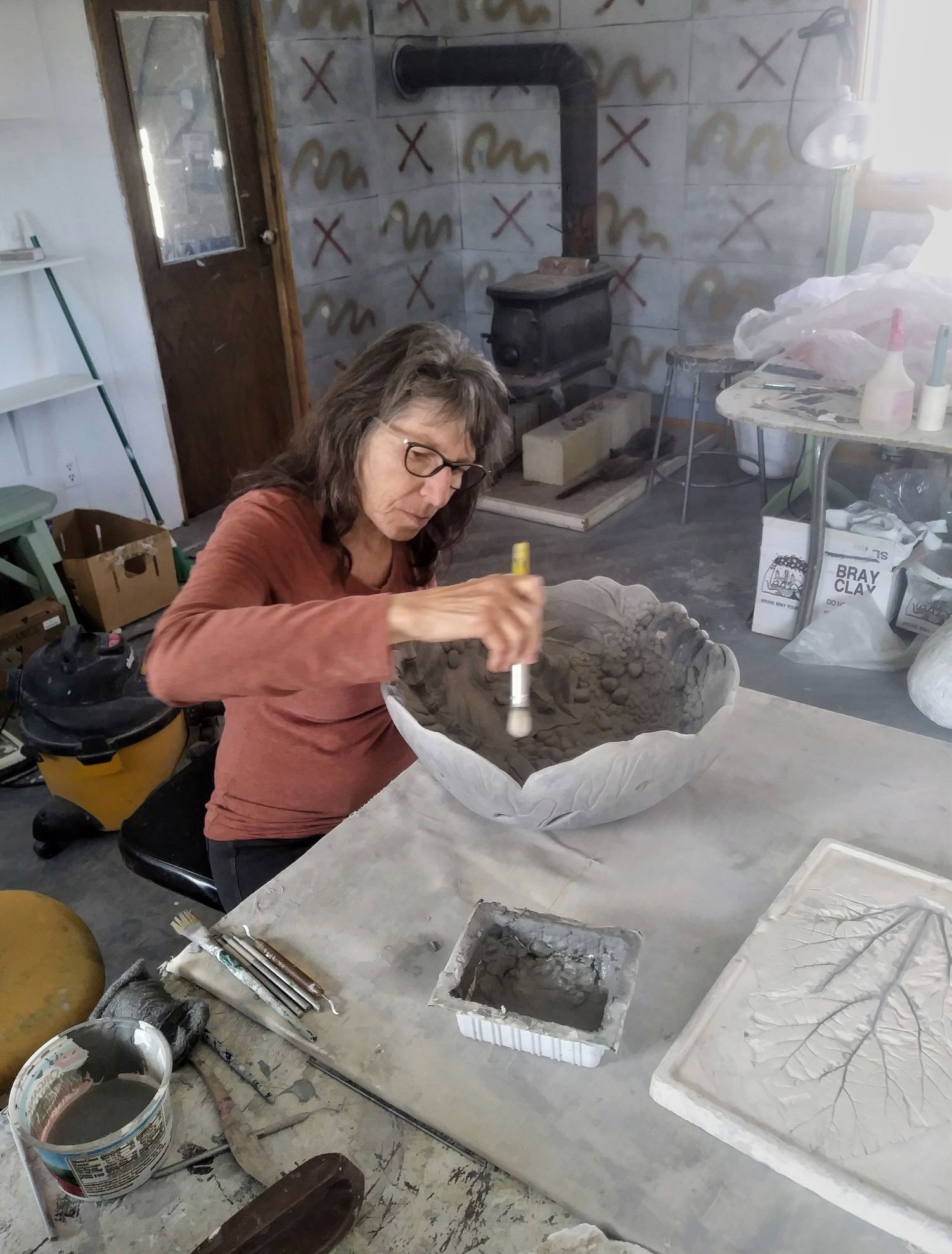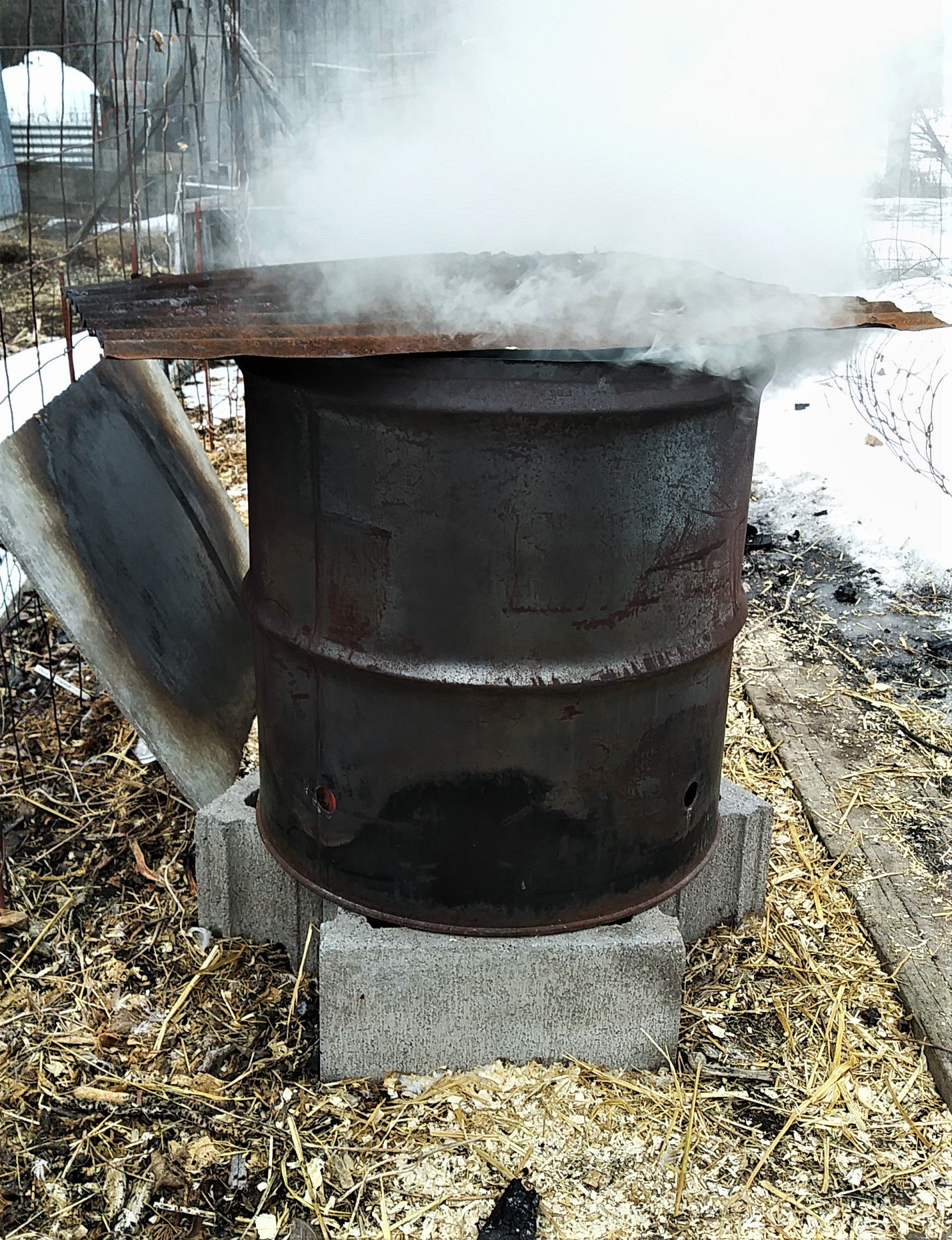Description of Processes
These pots are made from Archie Bray low fire sculpture clay with the addition of grog and silica sand. The refractory additions help combat the thermal shock encountered in primitive firing and prevent cracking. Initially I make an inventory of plaster molds of leaves, rocks, bones and other natural forms. Ceramic slabs are then pressed into the dry plaster molds. These individual clay slabs are then removed and allowed to partially dry on armatures. Then the pieces are assembled within another plaster vessel mold to create the form. After removal from the plaster vessel mold, the pot is further manipulated, carved and allowed to dry slowly. The surfaces of the pots are sometimes glazed and/or coated with terra sigillata (ultrarefined clay slip that can give a soft sheen when applied to bone-dry wares) and then bisque-fired in an electric kiln at various temperatures from Cone 08 through 04.
Following the bisque firing the pots are primitive fired in a number of ways: 1) fired in a campfire or metal barrel, 2) fired within a saggar (lidded ceramic container with combustibles inside) in an electric kiln. The saggar creates the most even reduction when fired to 900 degrees while the campfire or barrel methods are less predictable, depending on the wind, combustibles (wood shavings, sawdust, straw) and location of holes in barrel. Best results are obtained when the pot is pre-heated before the primitive firing to prevent thermal shock. These firings are designed to starve some of the surrounding atmosphere of oxygen causing a “reduction” which results in darkened surfaces on the pottery. Sometimes surfaces are “re-oxidized” and lighter areas may emerge. Following these firings, the surfaces are further modified through re-oxidizing with a propane torch, sanding, and/or applying paint.


Preheating Barrel

Packing Barrel with Combustibles

Reduction Firing in Barrel